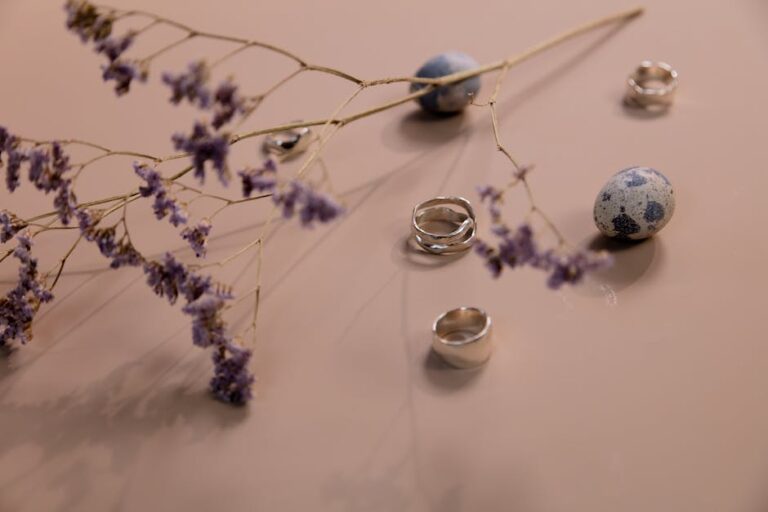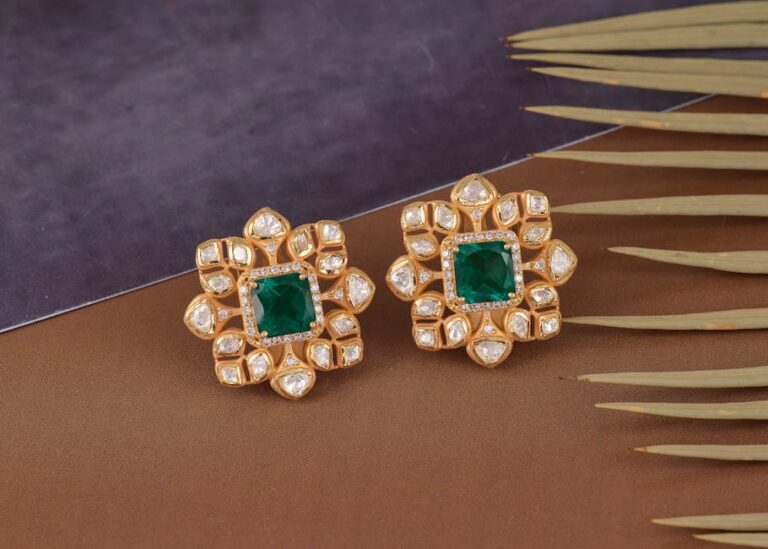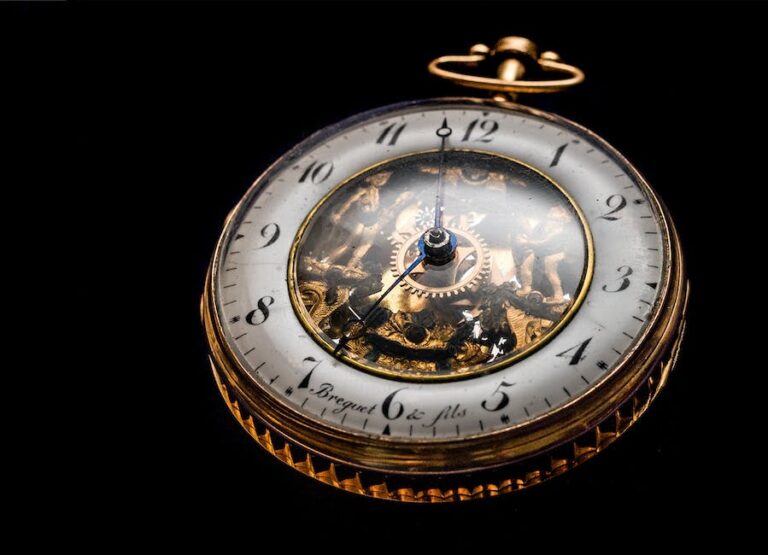The Ethical and Environmental Benefits of Choosing Lab Grown Diamonds
Natural diamonds have long been prized for their beauty, rarity and strength. However, the process of mining and extracting them from the earth has a significant environmental impact. Traditional diamond mining often involves blasting the ground with explosives, creating large craters and producing a lot of waste rock. This process disturbs the soil and ecosystem, destroying habitats and causing soil erosion, water pollution, and loss of biodiversity.
Furthermore, the energy and water consumption associated with diamond mining are enormous. It takes roughly 250 tons of earth to extract a single carat of diamond and uses significant amounts of water and energy in the processing stages.
According to environmental groups, the diamond industry accounts for about 1.5% of worldwide carbon emissions, which is equivalent to the total emissions from the aviation industry. The problem is further compounded by the fact that many diamond mines operate in countries with lax environmental regulations, leading to increased greenhouse gas emissions and degradation of the natural habitat.

How lab-grown diamonds are made
As a response to the environmental concerns of traditional diamond mining, scientists have developed a way to create diamonds in a lab. Lab-grown diamonds are made using two primary methods: high-pressure high-temperature (HPHT) and chemical vapor deposition (CVD). Both methods involve placing a tiny diamond seed crystal in a chamber and exposing it to high pressure and high temperatures with either methanol or graphite.
HPHT mimics the natural process of diamond creation by heating the liquid carbon under extreme pressure, while CVD involves a process of creating a gas plasma that produces a thin layer of diamond on top of a diamond crystal.
After several weeks, the diamond is grown, and the seed crystal is removed. Lab-grown diamonds are chemically and physically identical to natural diamonds, making them a popular option for ethical and planet-conscious buyers.
The ethical dilemmas surrounding the diamond industry
The traditional diamond industry is not only harmful to the environment but is also plagued with moral issues. Diamond mining operations can exploit communities, using forced labor and child labor. Additionally, natural diamonds are often mired in conflict, also known as “blood” or “conflict” diamonds.
These gems are mined in war-torn areas, often under brutal conditions and used to finance warlords and rebel groups engaged in violent activities. This unethical trade has contributed to human rights abuses, child labor, and political corruption.
As a result, ethical concerns surrounding the diamond industry have grown, causing a surge in demand for lab-grown diamonds. These sustainably created gems come with none of the ethical or environmental issues associated with their natural counterparts and offer a brighter, cleaner future for the industry.
Comparing the physical and chemical properties of natural and lab-grown diamonds
Lab-grown diamonds exhibit the same visual properties and chemical composition as natural diamonds. However, they contain fewer flaws and impurities since they are grown under controlled conditions, making them even more appealing to some buyers. In terms of durability, lab-grown diamonds are just as hard and scratch-resistant as natural diamonds due to their identical crystal structure, making them perfect for daily wear.
Lab-grown diamonds may also have superior clarity and color compared to natural diamonds. This is because of their growth process, which allows for a more precisely controlled environment to produce diamonds with desired characteristics. In contrast, natural diamonds are often riddled with impurities and irregularities that influence their appearance, leading to variations in price, quality, and rarity.
The benefits of choosing lab-grown diamonds over natural diamonds
While natural diamonds remain the traditional choice for engagement rings and other fine jewelry, lab-grown diamonds offer several advantages that are worth considering. Here are some of the benefits of choosing lab-grown diamonds:
-
Ethical and sustainable production: As previously mentioned, lab-grown diamonds are created in a sustainable and ethical way, with no environmental impact and without supporting unethical mining practices or human rights abuses.
-
Cost-effective: Lab-grown diamonds are significantly less expensive than natural diamonds, with some reports showing that they are up to 50% cheaper. This affordability allows people to have diamond jewelry without breaking the bank, and as a result, more and more people are choosing lab-grown diamonds.
-
Quality and selection: Lab-grown diamonds come in a wide range of quality and color options, providing a higher level of control over the appearance and size of the diamond. This feature allows for customization and flexibility in design, leading to unique and individualistic pieces.
-
Timeless beauty: Lab-grown diamonds exhibit the same dazzling sparkle and brilliance of natural diamonds, with the added benefit of being free from flaws and impurities. They are perfect for engagement rings, wedding bands, or any other piece of fine jewelry that will last a lifetime.

The growing popularity of lab-grown diamonds in the jewelry industry
In recent years, lab-grown diamonds have gained a significant foothold in the fine jewelry industry as more customers become aware of the ethical and environmental implications of natural diamond mining. The trend is especially popular among millennials that place a high value on sustainability and ethical practices.
Many luxury jewelry brands have also started offering lab-grown diamonds, such as Tiffany & Co, which launched a line called “Tiffany True” featuring the first engagement ring to use a lab-grown diamond. This shift in the industry indicates a trend for consumers’ demand for transparency and eco-friendliness.
The market for lab-grown diamonds is expected to grow exponentially over the coming years, making it an exciting time to explore this category of fine jewelry.
Where to buy lab-grown diamond jewelry
As lab-grown diamonds continue to surge in popularity, more and more jewelry stores are offering them alongside their natural diamond selections. However, it’s important to choose a reputable jeweler who can provide certification of the diamond’s origin and ethical features.
One great established retailer, Brilliant Earth, specializes in ethically sourced diamonds, colored gemstones, and fine jewelry. They offer a wide range of lab-grown diamond jewelry including engagement rings, wedding bands, earrings, and necklaces.
Another alternative is MiaDonna & Company. This brand has transformed the diamond industry by providing more sustainable and ethical options. MiaDonna is known for creating the world’s first conflict-free diamond simulant, the Diamond Hybrid, as well as ethical lab-grown diamonds that are backed by a limited lifetime warranty.
For an entirely online experience, consider Clean Origin. They have a wide selection of engagement rings and fine jewelry with lab-grown diamonds, as well as a 100-day money-back guarantee and lifetime warranty.
Overall, choosing lab-grown diamond jewelry is a smarter and more sustainable way to own beautiful diamond pieces. Thanks to advancements in technology, lab-grown diamonds are becoming more commonplace and accessible in the market, allowing jewelry enthusiasts to indulge in beautiful, sparkling gems with peace of mind.







